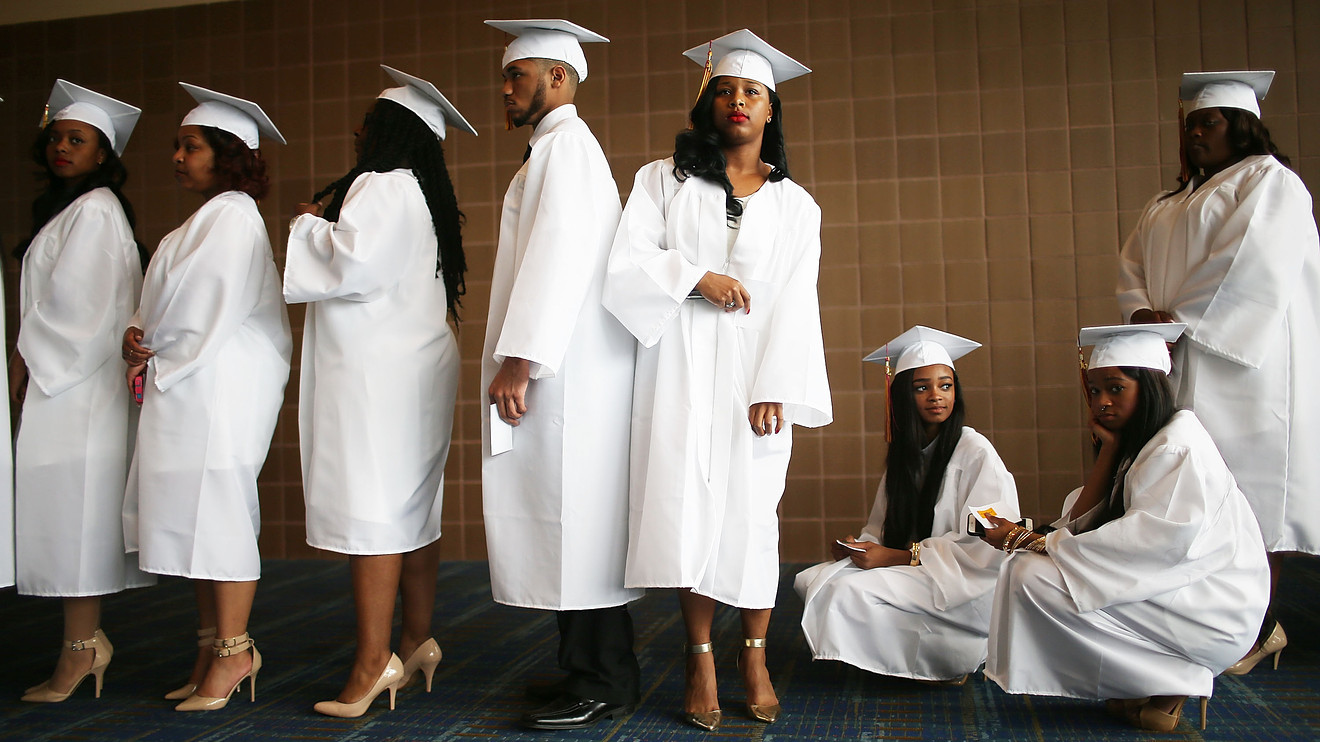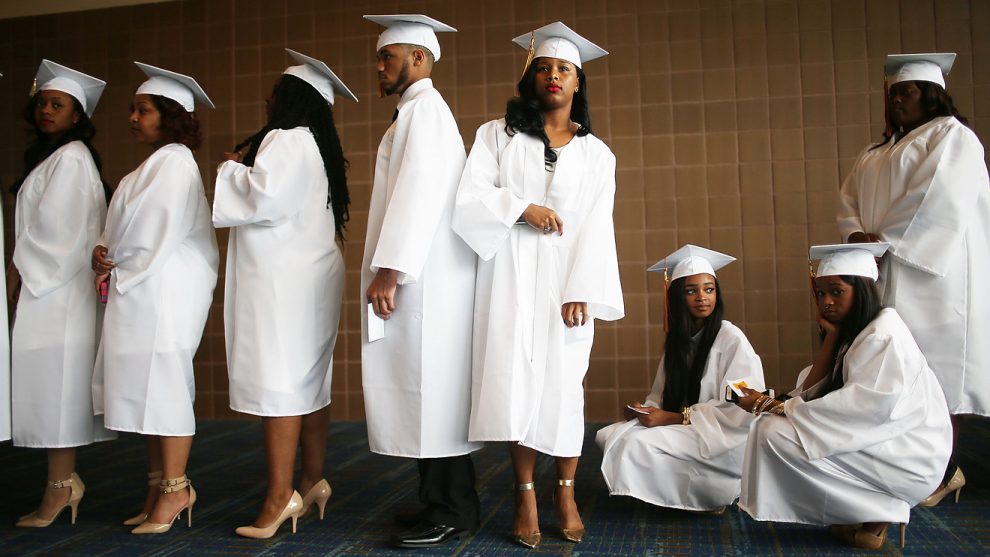
Class of 2019 high-school graduates who choose to skip out on college are entering a strong labor market.
The unemployment rate hit 3.6% in April. That’s the lowest it’s been since 1969.
“The number of vacant jobs exceeds the number of people looking for work by about a million,” said Paul Harrington, an education professor and the director of the Center for Labor Markets and Policy at Drexel University.
Despite these numbers, career prospects for high-school graduates today still aren’t as good as they were for graduates in 2000, according to a study released Thursday by the Economic Policy Institute (EPI), a liberal think tank based in Washington, D.C.
The EPI researchers found this year’s graduates who head directly into the workforce are likely to fare better than graduates from the classes of 2008 through 2018, but worse than 2000 graduates.
That’s remarkably similar to college graduates who graduate in 2019 versus those who graduated in 2000.
Fewer high-school graduates today are idled — neither employed nor enrolled in school — than in the years directly following the Great Recession. But there are more idled young people today than in 2000.
Approximately 19% of young high-school graduates today are underemployed, meaning they’re working fewer hours than they would like or are in a job that doesn’t maximize their skills. This percentage is lower than it was in 2007, but significantly higher than in 2000, the study said.
Similar to 2000, just under 10% of high-school graduates who are between the ages of 18 and 21 and not enrolled in college are unemployed.
Young black workers with a high-school diploma, but no college degree, are approximately twice as likely to be unemployed as young white workers with the same education level. Gould attributes the disparity largely to employment discrimination.
High school grads have less job experience
So why does the high-school class of 2019 face worse prospects than the class of 2000, despite the record-low unemployment rate?
For one, the strength of the economy may be overstated, said Elise Gould, a senior economist at the EPI and the author of the study.
“The economy isn’t as tight today as it was overall in 2000,” she told MarketWatch. “We have an unemployment rate that is historically low, but there are a lot of sidelined workers who aren’t being counted in unemployment.”
These workers left the workforce after the 2008 crash seeing no opportunities for themselves. The ones who want to work are still trickling back into the labor market today following a slow recovery from the recession, Gould said.
Toward the end of 2000, the labor-force participation rate topped 67%. Now, it sits at around 63%.
Harrington rejects the idea that the economy is a reason why job prospects aren’t as good for 2019 high-school graduates as they were for 2000 high school graduates.
“This is the strongest economy I’ve seen in my life time,” Harrington said. “What we have today is some employers who are not able to fill jobs.”
He points to a change in trends and high school education as causes for weaker prospects.
“A lot more kids who were graduating high school in 2000 had summer jobs or worked during the year,” Harrington said. “Having jobs helped them develop skills employers wanted.”
35% of teens had summer jobs in 2017 compared to nearly 52% in 2000, according to a 2018 Pew report.
Likewise, Harrington said high schools have begun to focus less on preparing kids for the workforce and more on prepping them for college, despite the fact that the majority of the American workforce over the age of 21 does not have a four-year degree.
“Kids graduating high school today often just don’t have the skills to enter the workforce because of the new idea of college for all,” Harrington told MarketWatch.
A college degree comes with a price
High-school graduates who do choose to transition into the workforce without further education will avoid accumulating the massive amounts of debt many college graduates today carry. High-school graduates in 2019 who plan to go to college and take out loans are expected to leave university with an average of $37,400 of debt.
But those who skip college will also miss out on the economic benefits a university degree provides. College graduates do better in the labor market and earn higher wages on average, Gould said. As of August 2018, the unemployment rate for those with at least a bachelor’s degree was 2.1%.
The labor market is strong for 2019 college graduates, but just like for high-school graduates, prospects aren’t as good as they were in 2000. The primary reason? Debt. Wages haven’t grown much over the past few years, but student-debt levels continue to rise. And graduates today are leaving school with an average of $20,000 more debt than graduates 13 years ago.









